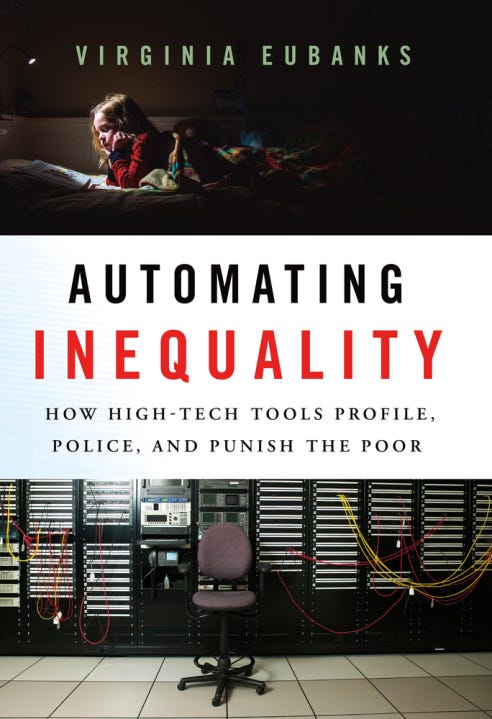
(This was originally posted on NewCo Shift)
Ever since key Apple investors challenged the company to address kids’ phone addiction, I’ve gotten a stream of calls asking me to comment on the topic. Mostly, I want to scream. I wrote extensively about the unhelpful narrative of “addiction” in my book It’s Complicated: The Social Lives of Networked Teens. At the time, the primary concern was social media. Today, it’s the phone, but the same story still stands: young people are using technology to communicate with their friends non-stop at a point in their life when everything is about sociality and understanding your place in the social world.
As much as I want to yell at all of the parents around me to chill out, I’m painfully and acutely aware of how ineffective this is. Parents don’t like to see that they’re part of the problem or that their efforts to protect and help their children might backfire. (If you want to experience my frustration in full color, watch the Black Mirror episode called “Arkangel” (trailer here).)
Lately, I’ve been trying to find smaller interventions that can make a huge different, tools that parents can use to address the problems they panic about. So let me offer two approaches for “addiction” that work at different ages.
Parenting the Small People: Verbalizing Tech Use
In the early years, children learn values and norms by watching their parents and other caregivers. They emulate our language and our facial expressions, our quirky habits and our tastes. There’s nothing more satisfying and horrifying than listening to your child repeat something you say all too often. Guess what? They also get their cues about technology from people around them. A child would need to be alone in the woods to miss that people love their phones. From the time that they’re born, people are shoving phones in their faces to take pictures, turning to their phones to escape, and obsessively talking on their phones while ignoring them. Of course they want the attention that they see the phone as taking away. And of course they want the device to be special to them.
So, here’s what I recommend to parents of small people: Verbalize what you’re doing with your phone. Whenever you pick up your phone (or other technologies) in front of your kids, say what you’re doing. And involve them in the process if they’d like.
- “Mama’s trying to figure out how long it will take to get to Bobby’s house. Want to look at the map with me?”
- “Daddy’s checking out the weather. Do you want to see what it says?”
- “Mom wants to take a picture of you. Is that OK?”
- “Papa needs a break and wants to read the headlines of the New York Times. Do you want me to read them to you?”
- “Mommy got a text message from Mama and needs to respond. Should I tell her something from you too?”
The funny thing about verbalizing what you’re doing is that you’ll check yourself about your decisions to grab that phone. Somehow, it’s a lot less comfy saying: “Mom’s going to check work email because she can’t stop looking in case something important happens.” Once you begin saying out loud every time you look at technology, you also realize how much you’re looking at technology. And what you’re normalizing for your kids. It’s like looking at a mirror and realizing what they’re learning. So check yourself and check what you have standardized. Are you cool with the values and norms you’ve set?
Parenting the Mid-Size People: Household Contracts
I can’t tell you how many parents have told me that they have a rule in their house that their kids can’t use technology until X, where X could be “after dinner” or “after homework is done” or any other markers. And yet, consistently, I ask them if they put away their phones during dinner or until after they’ve bathed and they look at me like I’m an alien. Teenagers loathe hypocrisy. It’s the biggest thing that I’ve seen to undermine trust between a parent and a child. And boy do they have a lot to say about their parents’ addiction to their phones. Oy vay.
So if you want to curb the usage of your child’s technology use, here’s what I propose: Create a household contract. This is a contract that sets the boundaries for everyone in the house — parents and kids.
Ask your teenage or tween child to write the first draft of the contract, stipulating what they think is appropriate as the rules for everyone in the house, what they’re willing to trade-off to get technology privileges and what they think that parents should trade-off. Ask them to list the consequences of not abiding by the household rules for everyone in the house. (As a parent, you can think through or sketch the terms you think are fair, but you should not present them first.). Ask your child to pitch to you what the household rules should be. You will most likely be shocked that they’re stricter and more structured than you expected. And then start the negotiation process. You may want to argue that you should have the right to look at the phone when it’s ringing in case it’s grandma calling, but then your daughter should have the right to look at her phone to see if her best friend is looking. That kind of thing. Work through the process, but have your child lead it rather than you dictate it. And then write up those rules and hang them up in the house as a contract that can be renegotiated at different types.
Parenting Past Addiction
Many people have unhealthy habits and dynamics in their life. Some are rooted in physical addiction. Others are habitual or psychological crutches. But across that spectrum, most people are aware of when something that they’re doing isn’t healthy. They may not be able to stop. Or they may not want to stop. Untangling that is part of the challenge. When you feel as though your child has an unhealthy relationship with technology (or anything else in their life), you need to start by asking if they see this the same way you do. When parents feel as though what their child is doing is unhealthy for them, but the child does not, the intervention has to be quite different than when the child is also concerned about the issue. There are plenty of teens out there that know their psychological desire to talk non-stop with their friends for fear of missing out is putting them in a bad place. Help them through that process and work through what strategies they can develop and learn to cope. Helping them build those coping skills long term will help them a lot more than just putting rules into place.
When there is a disconnect between parent and child’s views on a situation, the best thing a parent can do is try to understand why the disconnect exists.Is it about pleasure seeking? Is it about fear of missing out? Is it about the emotional bond of friendship? Is it about a parent’s priorities being at odds with a child’s priorities? What comes next is fundamentally about values in parenting. Some parents believe that they are the masters of the house and their demands rule the day. Others acquiesce to their children’s desires with no push back. The majority of the parents are in-between. But at the end of the day, parenting is about helping children navigate the world and support them to develop agency in a healthy manner. So I would strongly recommend that parents focus their energies on negotiating a path through that allows children to be bought-in and aware of why boundaries are being set. That requires communication and energy, not a new technology to police boundaries for you. More often than not, the latter sends the wrong message and backfires, not unlike the Black Mirror episode I mentioned earlier.
Good luck parents — parenting is a non-stop adventure filled with both joy and anxiety.
